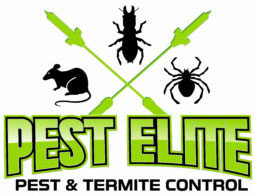Serious pest infestations can ruin stored food products, destroy buildings, and impact a business’ reputation. However, there are other not so obvious but serious consequences and costs associated with pest infestation.
Health Risk #1: Rodents
Rodent activity can quickly become a serious problem, causing great financial and potential health risks.
Research has shown that globally, rodents eat and spoil enough food to feed 280 million people in developing countries for a year.
It is estimated between one fifth to one third of the world’s food supplies never reaches the mouths of consumers.
Rats and mice are omnivorous, devouring all types of food and food-based products. They require water to survive but they can obtain this from the most unlikely sources, such as condensation from machinery and service pipes, air-conditioning outlets, and water pooling in drain traps.
A family of ten rats will produce 146,000 droppings and 54 litres of urine in one year.
Rodents are carriers and transmitters of many life-threatening diseases affecting humans, including Bubonic Plague, Typhus, Rat Bite Fever, Salmonella and Trichinosis. They can also chew through electrical wires, and are a common cause of fires.
The safest and most effective way to prevent or control a rodent problem is via an integrated approach, which utilises a combination of methods, procedures and products in combination. This integrated approach often includes a baiting program. Bait is fixed inside tamper proof bait stations which are in turn, secured in place. It’s important that the bait is secure inside the stations, so the rodents cannot take the bait away and deposit it where it’s not wanted. This is particularly critical in food handling facilities as it reduces the risk of food contamination.
Rodent bait stations should be strategically positioned depending on the individual site layout, building design, local environment, type of business and of course, the extent and degree of rodent activity. The stations may also contain other monitoring or control devices eg: live catch traps, snap traps, gluetraps and monitoring only formulations”.
Stations are installed around the perimeter of the building, fence lines, near entrances and in areas where the rodents may breed, hide or forage for food. “All rodent stations and other control devices should be numbered and clearly identified on a site map housed in the Site Service Register.
Health Risk #2: Pigeons & Other Pest Birds
Pest birds, such as pigeons, starlings, mynhas and sparrows, can create significant problems for factories, shopping centres, restaurants, property managers and warehousing complexes. Left uncontrolled, it can often lead to birds nesting in and defacing building facades which can result in both extensive internal and external damage, plus a residual problem relating to bird mites that requires additional treatment.
But pest birds can present more than just a nuisance problem to facility managers: Did you know birds and their droppings can carry more than 60 pathogenic diseases that can invade and infect humans? These diseases include Histoplasmosis, Aspergillosis and Cryptococcosis – some of which can be fatal.
Bird problems can also cause safety issues, there have actually been reports of bridges collapsing due to bird dropping build-up. If the bird excrement isn’t cleaned away, it dries into a concentrated salt. When moisture or humidity combiines with the salt and ammonia, it creates small electrochemical reactions which rust the steel superstructure underneath.
There are a variety of methods and technologies to assist with feral bird control, including bird spikes, trapping, physical and visual deterrents and netting. Effective prevention and control requires a combination of pest management techniques tailored to address the specific site and individual problem.
Health Risk #3: Mosquitoes & Flies
Mosquitoes are commonly regarded as the world’s most dangerous creature. They are the number one carrier of the lethal Malaria virus, causing around 400 million cases of infection each year and tragically resulting in one to two million deaths worldwide annually. 85% of those are babies and children under the age of 2. Thankfully, Australia is currently malaria-free but mosquitoes can carry other illnesses such as Ross River fever, the Barmah Forest virus and Dengue fever.
Like mosquitoes, flies may seem innocent but can in actual fact, carry a range of dangerous diseases including Cholera, Typhoid, Hepatitis, Influenza, Tuberculosis and Tetanus.
Implementing an effective Flying Insect Control Program incorporating Flying Insect Control Units (FICU) system will help minimise the potential health risks associated with mosquitoes and flies. FICU’s are designed to attract and trap wide range of flying insects via several methods including pheromones, kairomones, carbon dioxide and U.V. light. A well structured program can be the ideal solution for camp accommodation, hospitality venues, tourist attractions, mining sites, food processing, food preparation and food warehousing facilities.
“Electronic Flying Insect Control Units are one of the several effective solutions. The benefits include the attraction and capture of flying insects, the monitoring and identification of species, they enable early detection of impending infestation and indicate when other measures may be needed,” says Gary Stephenson”.
Without effective, ongoing pest control, minor pest activity can quickly evolve into a widespread infestation which can quickly lead to health problem and disease. Implementing and maintaining regular pest inspections and control programs will help minimise this risk

